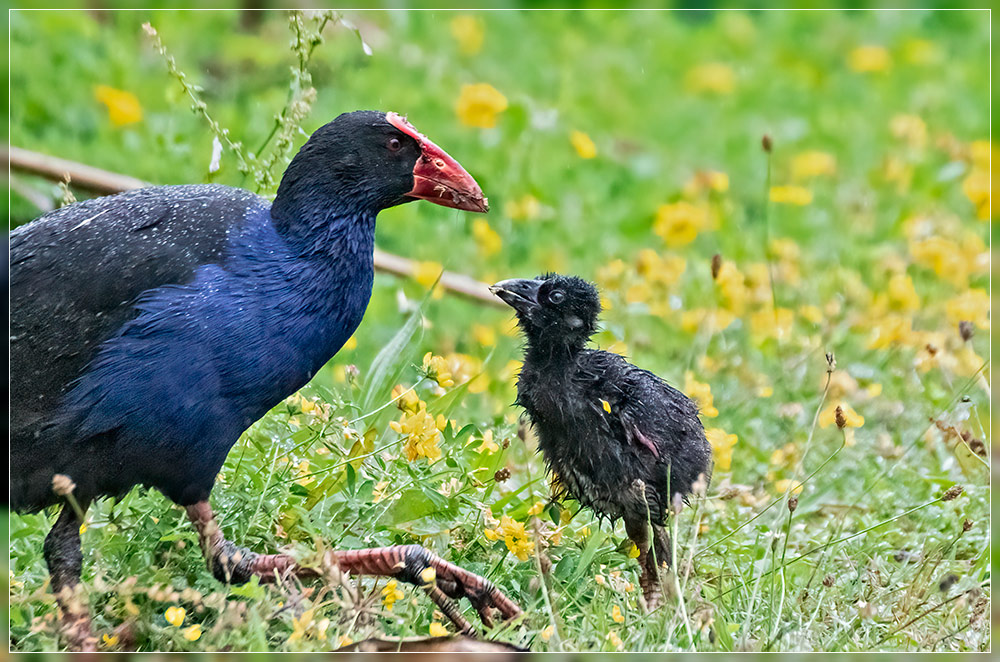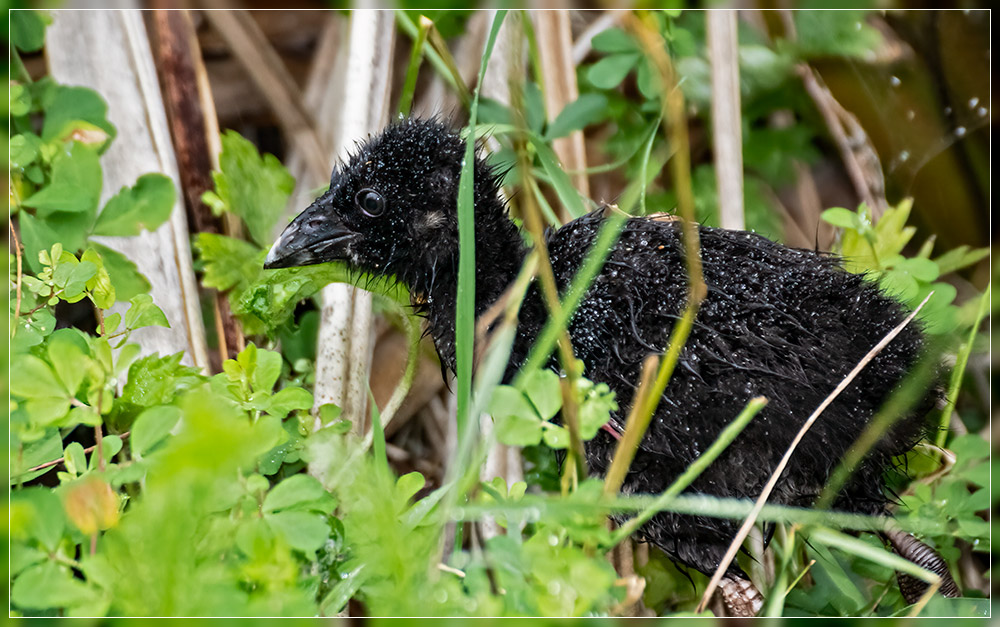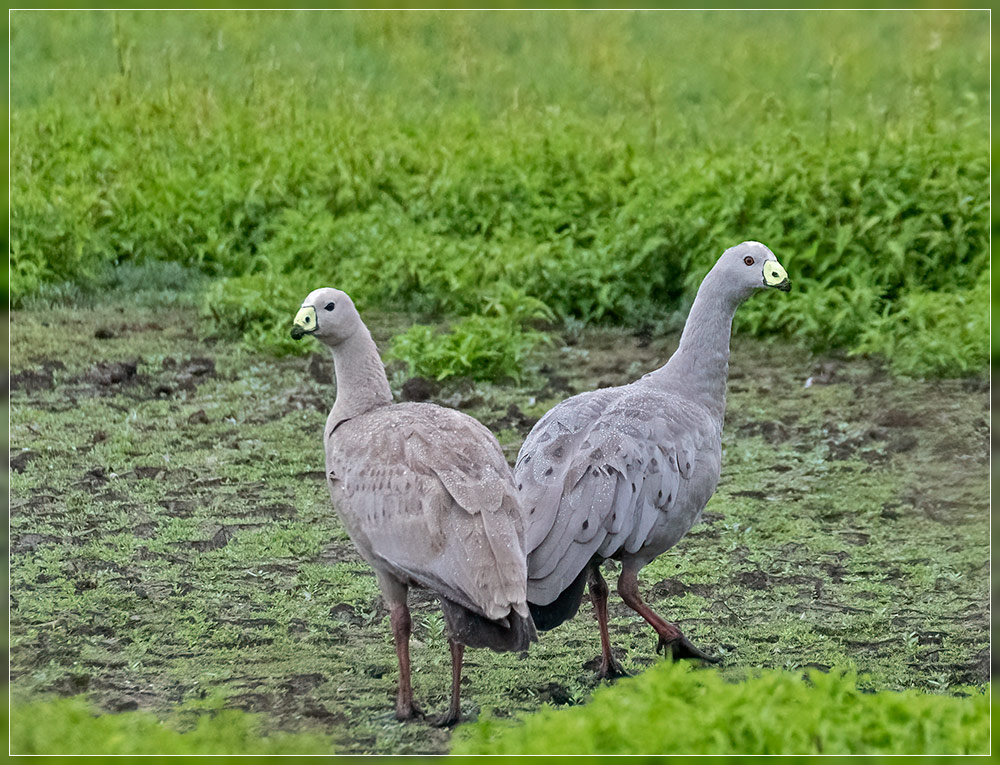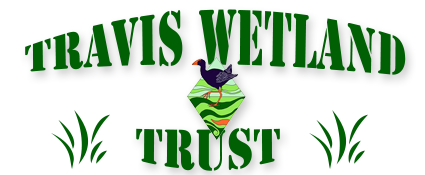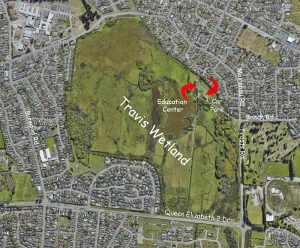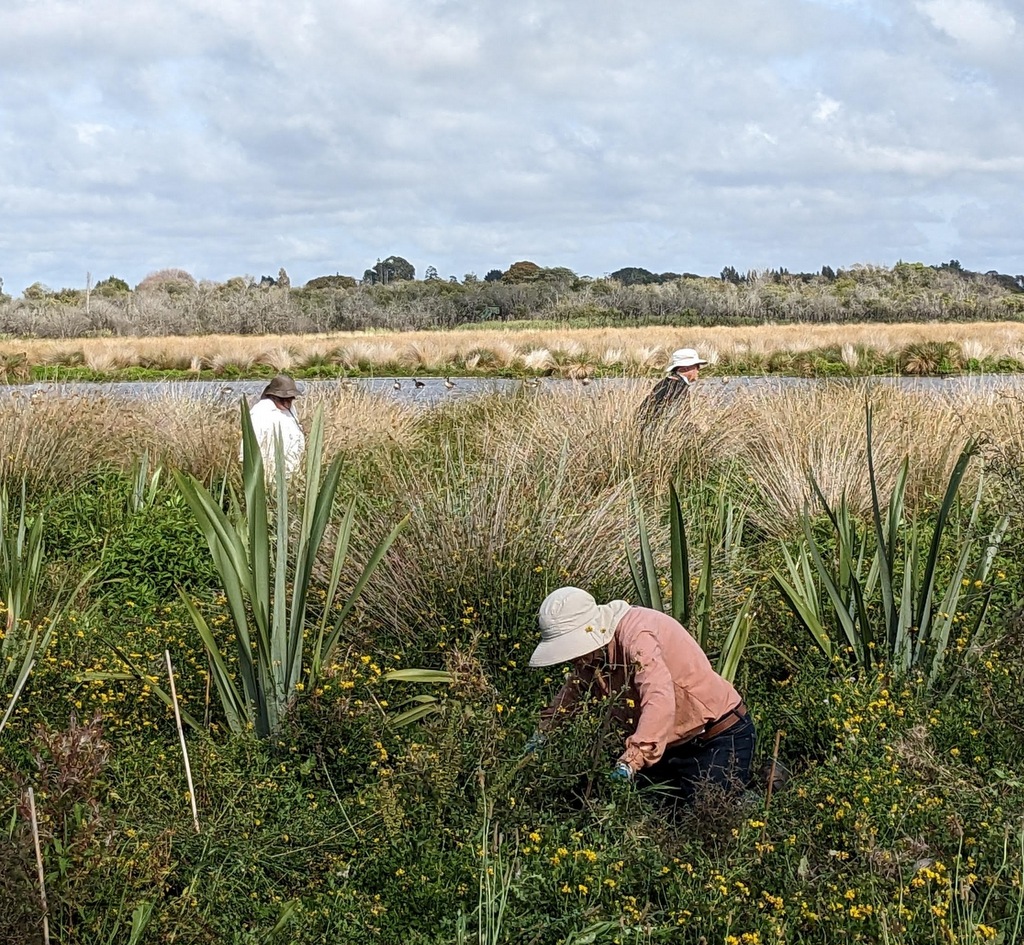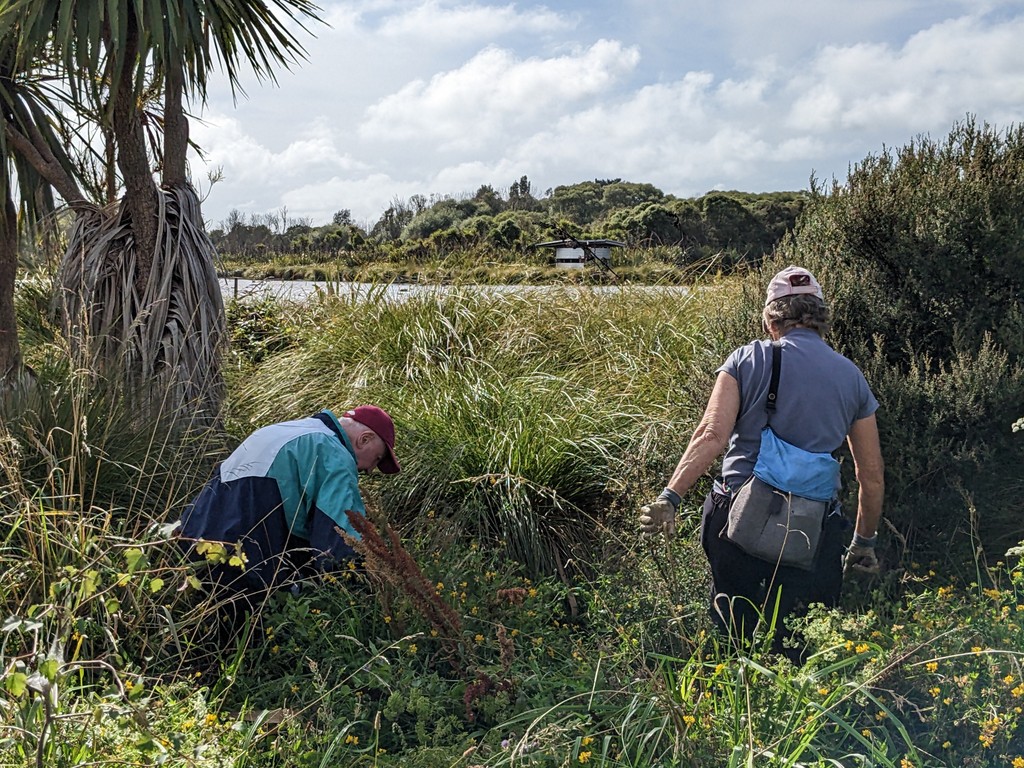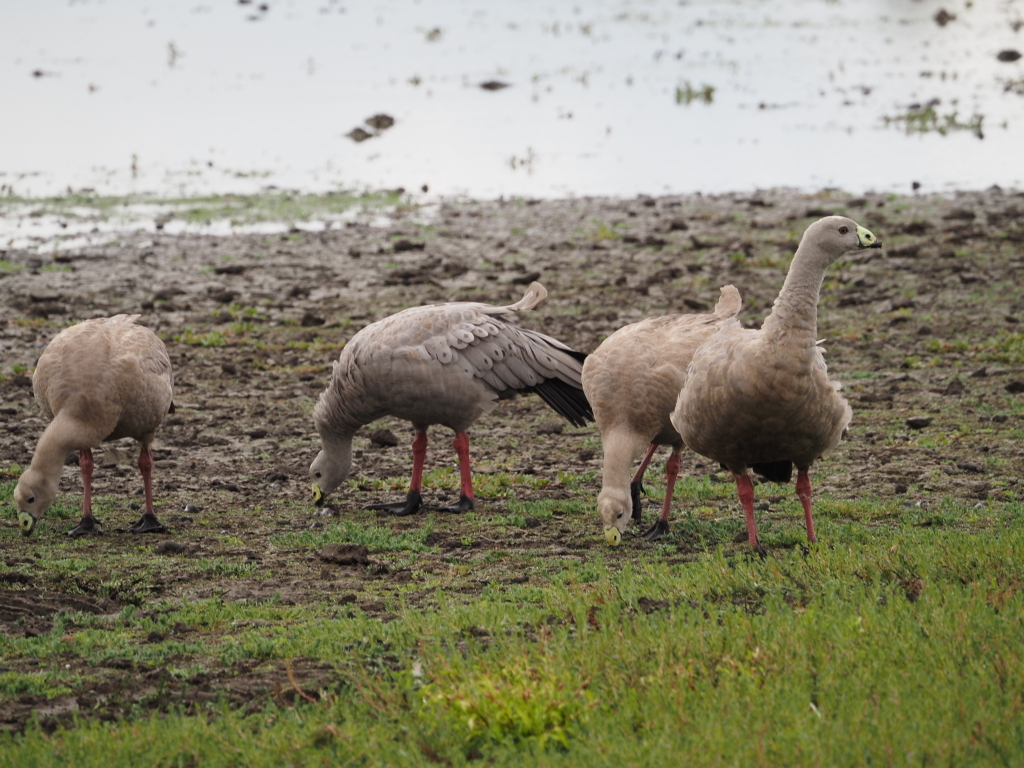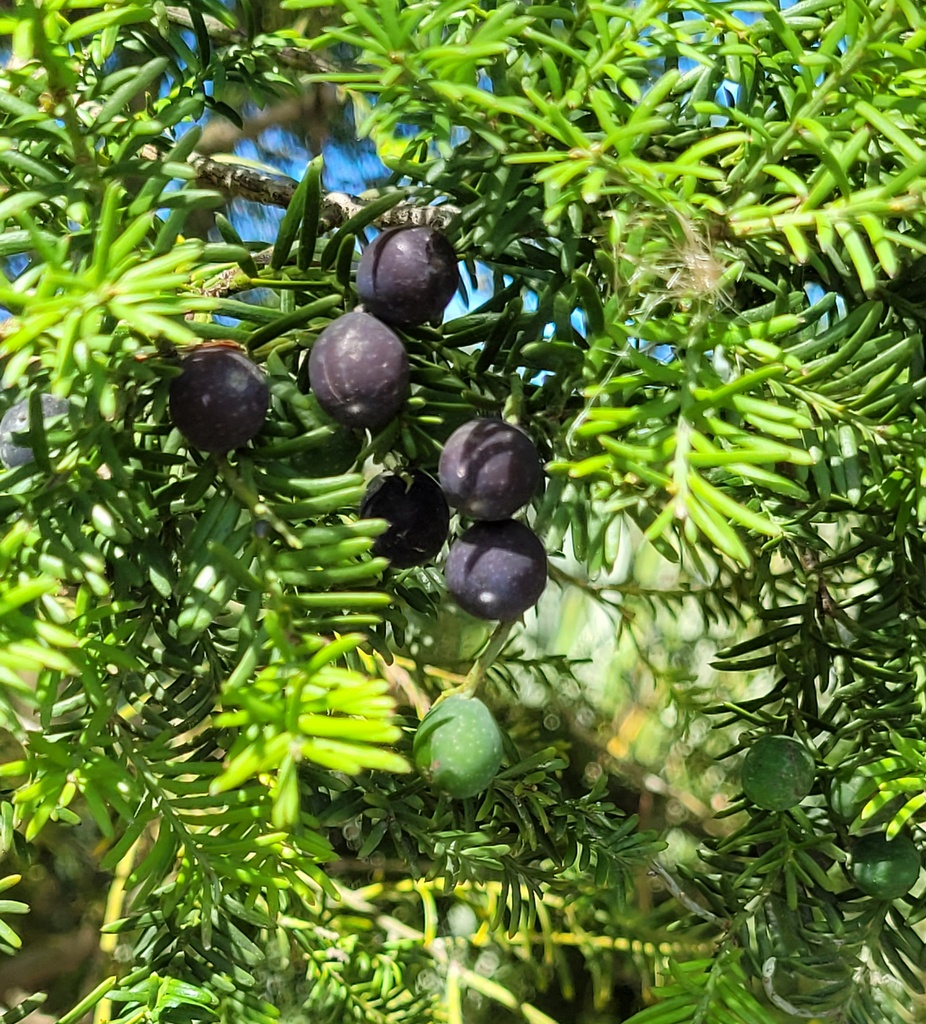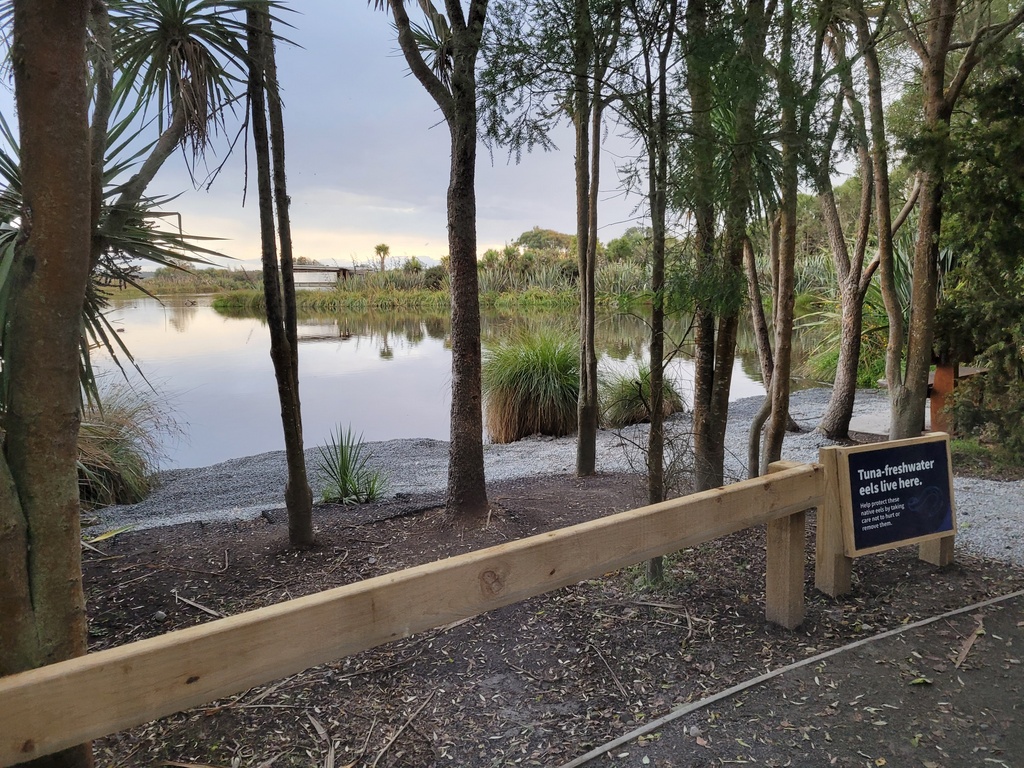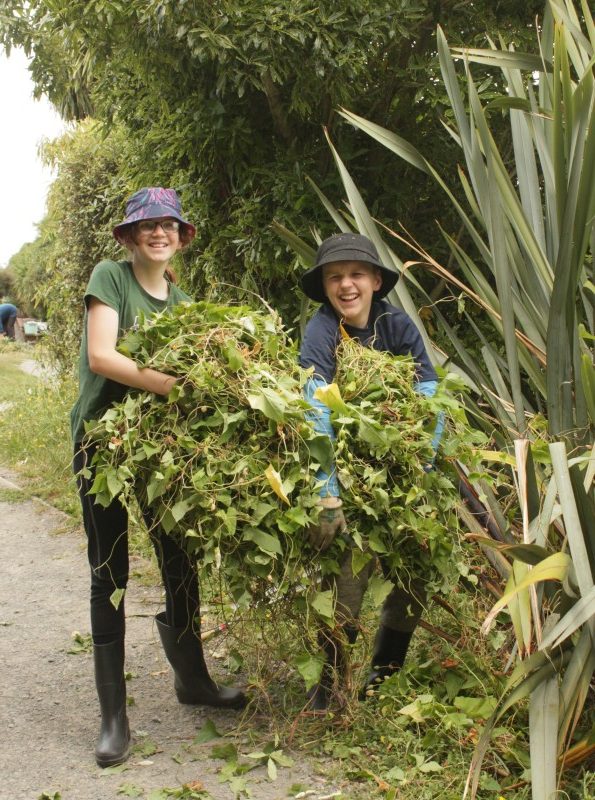All previous newsletters can be found here.
Work Day Reminder, March 18 2023
The next monthly work day will be from 9.00am – noon this coming Saturday.
This month we’ll be removing all the Beggarticks plants in hairy leg or woolly sock distance of the driveway, car park and wetland walk paths before they seed. They will be hand pulled or cut with flax knives..
If you arrive late there will be a notice on the Education Centre door explaining where we have gone.
All tools provided. Gumboots are advised but probably not necessary at this time of year. Please bring your own gloves if you can, but we have some for loan.
Latest News
Report on Last Month’s Work Day, 18 February
It was another fine workday and 20 people turned up for the long trudge to our site on the western side of the main pond. We were lucky to see our resident Cape Barren Geese with their 2 near adult offspring along the way.
Off the main trail we crossed a muddy stream and enjoyed seeing pied stilts in the early morning light. They were surprised to see us as humans seldom visit this spot. Views back to more familiar landmarks across the water were much appreciated.
As expected, weed growth was rampant with seasonal Common Beggarticks (Bidens frondosa) forming near total cover in wetter areas. We had to tread very carefully to find our planted specimens as they were often totally covered. Luckily many ribbonwoods had grown tall in the drier areas, alongside shorter small-leafed shrubs. Creeping cinquefoil (Potentilla reptans) was spreading in a lush carpet, despite competition with invasive lotus, grasses and other weeds.
The dry weather helped us access damper areas near the water. Plantings of flax and cabbage tree were doing well, though kahikatea and mataī were completely buried under weeds. It was encouraging to find these small but healthy podocarps after careful weed removal.
By late morning it was time to follow Kenny’s excellent temporary track back to the info centre. Meanwhile, a group of energetic children had been busy elsewhere with Eleanor.
The young ones were busy pulling convolvulus from plants when they discovered a patch of Dog’s vomit slime mould (Fuligo septica). (See a past image of this species here.) Excitement when one of the group used a stick to touch it and it almost immediately changed colour to an orange shade.
Then we made our way back to a known stick insect spot. Heath found three specimens all in different stages of growth. We talked about the instar, as it is named, when the stick insect sheds its old skin for a larger one; eight times! Also we discussed the fragility of stick insects and the need to not damage them. Best viewed without touching. Thanks young people for your good ‘work and learn morning.’
Thanks everyone for helping.
Article: Sue Britain, Images: Dave Evans
Cape Barren Goose
Recent visitors to Ōruapaeroa/Travis Wetland have been seeing four Cape Barren Geese in the newly mown grazing marsh paddocks near the stock yard. The adult pair have successfully raised two young. This is the first record of Cape Barren Geese breeding here. These are now a wild population, rather than vagrants visiting from domestic flocks nearby.
Fun fact, recently they have been found to be related to the extinct, flightless, giant New Zealand Goose Cnemiornis.
Cape Barren Geese (Cereopsis novaehollandia) are native of Australia and are named after Cape Barren Island near Tasmania. There is a history of both liberation and self-colonisation in NZ.
Article and image: John Skilton
New Pest Fish Control Poster
Recently ranger John Skilton and DoC scientist Helen McCaughan created a poster describing the history of pest fish at Travis Wetland. The poster is on the wall at the Travis Education Centre and is reproduced below in two parts.
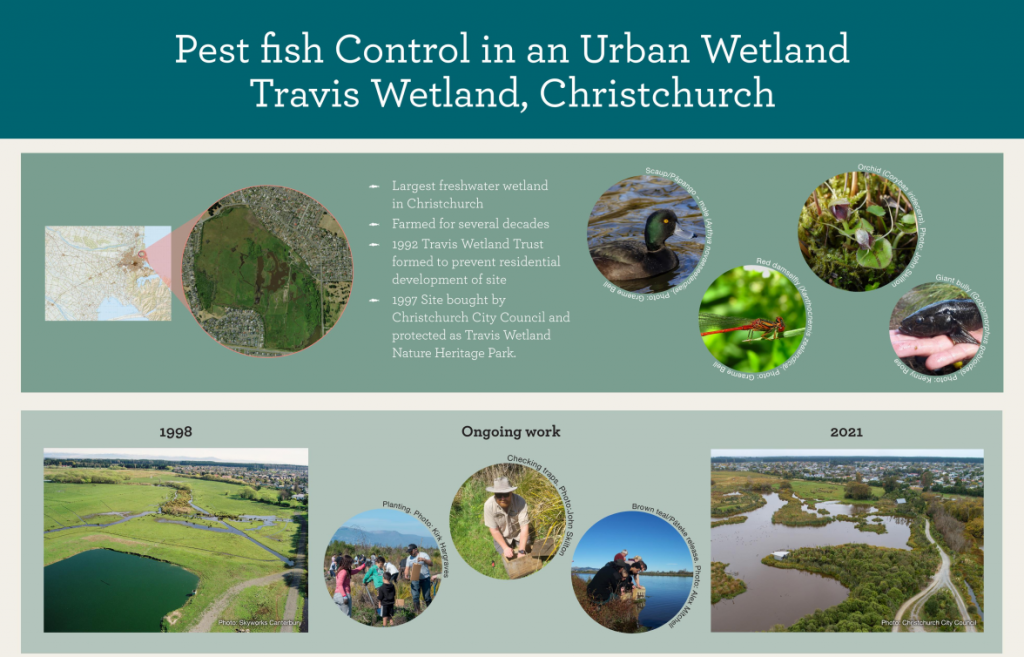

Mataī Tree Berries
Mataī trees are dioecious, they have male and female flowers on separate trees.
The mataī tree behind Charlie Catt’s memorial seat is a female and is laden with berries. This is the first time in hundreds of years that a mataī tree has fruited at Ōruapaeroa / Travis Wetland! The berries are a favoured food of the kererū, perhaps this will be the next bird species to be seen here.
Article and image: John Skilton
Facelift for Main Pond Edge
Recently ranger Kenny Rose has been hard at work at the pond edge where people come to feed the eels. Low barriers have been installed to try and prevent people from leaving the path all over the place and trampling under the trees. Gravel has also been laid to give a more resilient surface. Around the same time Dave Evans cleaned up Charlie’s seat and gave it a fresh coat of oil.
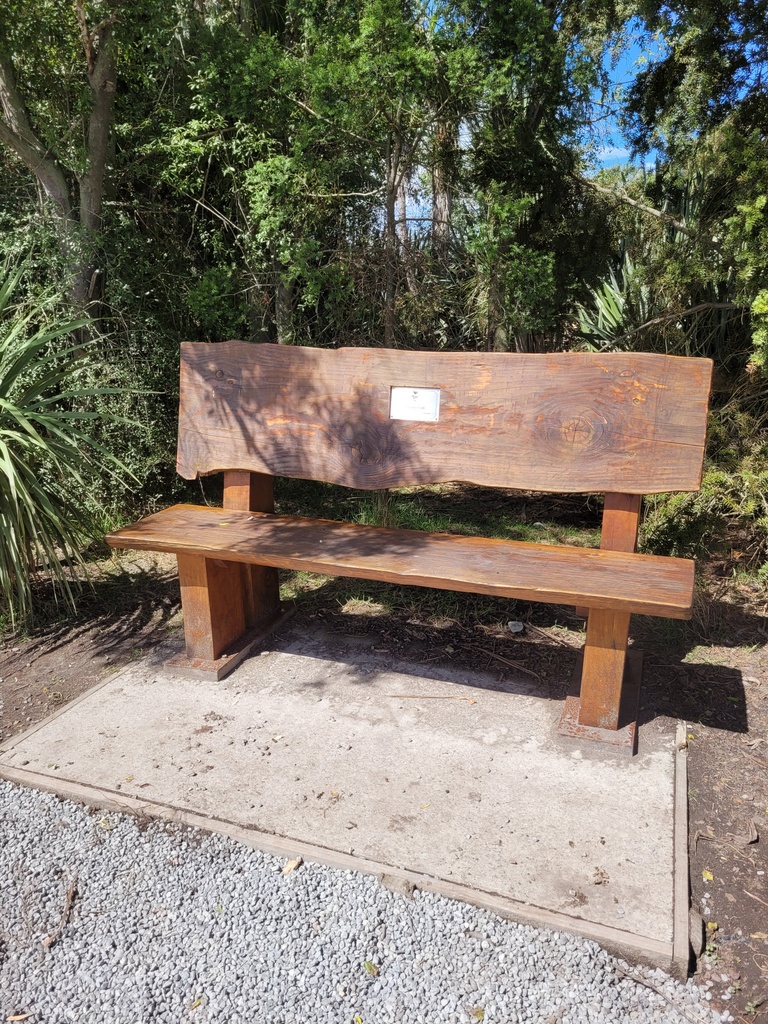
Images: John Skilton
Two Willing Workers
During the school holidays Lauren and Nicolas devoted some of their precious time to work with with Wayne’s Wednesday Warriors removing pesky convolvulus from flax plants. It required a lot of energy and patience to wrench it from the entanglement it had created. They won.
Thanks them to both for persisting!!!!
Article and image: Eleanor Bissell
Images from Grahame
